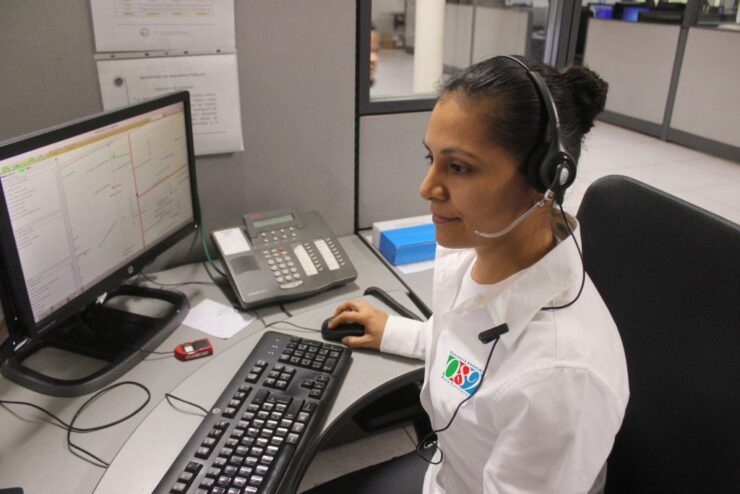In today’s fast-paced healthcare landscape, patient satisfaction and effective communication are paramount for any successful practice. A powerful and often overlooked tool to achieve this is the advanced Physician’s Answering System. An efficient solution, it tackles numerous routine tasks while freeing medical professionals to focus on administering top-notch patient care.
Unleashing The Power of Technology

Advancements in technology have revolutionized almost every domain, and the healthcare industry is no exception. As time being a scarce resource, harnessing the power of technology can contribute significantly to streamlining operations and increasing overall productivity.
Seamless Communication
Maintaining clear and open communication channels is vital in healthcare. Patient inquiries, appointment scheduling, and reminders can be easily handled through a reliable answering system, ensuring the process is seamless for both patients and staff alike.
Urgent Message Handling
Not every patient query requires immediate attention from a physician. Having an answering system in place can provide initial assessment and decide whether a situation demands immediate medical attention or can be scheduled for later.
In the bustling function of a healthcare practice, a physician answering service is far more than just a tool for answering calls. This nifty service acts as a bridge, connecting physicians, staff, and patients, enhancing the overall communication process.
Economical And Efficient Solution

In an era where efficiency is king, traditional ways of managing patient communication needs, reliant on disproportionately high manpower, are becoming less feasible and effective. The advent of technology in the healthcare sector is a gamechanger, strategically catapulting cost-effectiveness and productivity to the center stage of operations.
Saves Man-hours
Every medical facility thrives on accuracy, urgency, and attention to detail. However, the receptionists and administrative staff often grapple with the continuous onslaught of routine calls and messages that can detract from these important tasks. The implementation of a potent answering system deftly handles these routine jobs, thereby liberating valuable man-hours. This added time can be redeployed into tasks like patient engagement and medical record maintenance, thus leveraging their skills to the fullest and enhancing professional efficiency.
Reduces Operational Costs
Cost optimization is a crucial aspect of running a successful healthcare facility. Traditional methods of communication management often demand additional personnel to cope with the vast and diverse call traffic, leading to inflated salaries and overheads. By contrast, an efficient answering service system seamlessly manages this call deluge without requiring any extra staffing. This not only leads to substantial operational cost savings but also ensures resource allocation is executed more judiciously and thoughtfully.
Streamlines Information Flow
An additional hidden benefit is the streamlining of information flow that was previously entangled in a web of miscommunications. A proficient answering system structures the communication methodically, ensuring no information slips between the cracks. This organizational efficiency directly translates into better patient experience and higher staff satisfaction.
Improved Quality of Patient Care

Top-tier patient care remains the ultimate goal for any healthcare practice. Introducing an answering system can significantly contribute to achieving this goal.
Follow these core principles to improve your team’s patient care and health outcomes:
1. Show respect
Like you, your patients have direct and indirect needs and desires that affect patient outcomes. Their level of medical education, financial constraints, transportation availability, and care access influence their choices and their patient experience.
Acknowledging and taking care of patient concerns demonstrates that you see them as humans with unique needs. This kind of patient care may also help motivate them to respect their health journey and follow their care plan.
Not sure how to start practicing this type of patient care? Harvard Medical School researchers have identified eight principles that guide patient-centered care plans. Respect fuels all of them.
2. Express gratitude
You’re grateful to have a practice where you can take care of patients and help them achieve their health goals. Express that gratitude to them every chance you get. A simple, “Thanks for choosing our practice” goes a long way, especially when it’s accompanied by small things like eye contact and the patient’s name. The Clinical Advisor reports that medical professionals who apply these basic social skills generate much higher patient satisfaction scores.
Ideal patient care addresses basic human needs. Ask each individual patient and each patient’s family about their preferences, goals, and expectations. When you trust them as a healthcare partner, they’re more likely to trust your recommendations and become loyal patients.
Reward that loyalty with milestone and holiday celebration treats or gift certificates when a patient refers a friend or when a patient’s family member helps spread the word about your expertise. When you demonstrate your appreciation regularly, you’ll reap the economic benefits of the patient-centered care model: more referrals.
3. Enable access to care

To enhance the care of patient populations across regions, ethnicities, and social classes, medical professionals have transcended the boundaries of the traditional medical environment to address the social determinants of health.
Persistent, long-term factors like education, social position, income, and living environment play a significant role in promoting patient care and preventing or reducing disease effects. Addressing these (often subtle) determinants will improve patient outcomes. To do so, care team members must know a patient’s medical history and implement patient care technology that helps prevent errors and encourages care plan compliance.
It’s critical to make appointment scheduling quick and easy. A future patient should never be left to wait on hold or have to click five times on your website just to contact you or schedule an appointment.
Platforms designed for patient care automate this function — they even send thank-you and welcome messages to new patients after they’ve booked an appointment. Care Management software will enable you to seamlessly manage patient care compassionately while meeting the needs of each individual patient and each patient’s family members who may be assisting with decision-making and care plan implementation.
Patient Satisfaction

An efficient answering system ensures all patient queries are addressed promptly and professionally, increasing their satisfaction and trust in the practice.
Better Organized Follow-ups
The system can help compile and organize patient data effectively, ensuring timely follow-ups and effective management of patient health records.
Just before wrapping up the discussion on the efficacy of answering systems, it is worth mentioning that call center answering services are an integral part of this change. They are designed to accommodate the 24×7 needs of medical practice, acting as an indispensable resource.
Conclusion
From enhancing communication to reducing operational costs, and augmenting patient satisfaction, it is clear how a Physician’s Answering System is revolutionizing the healthcare sphere. By leveraging this efficient technology, medical practices can provide improved care to their patients, leading to healthier communities and a brighter future for all in the realm of healthcare. These innovative answering systems are proof that weaving technology into the fabric of healthcare operations can result in significant improvement in service delivery and operational efficiency.

